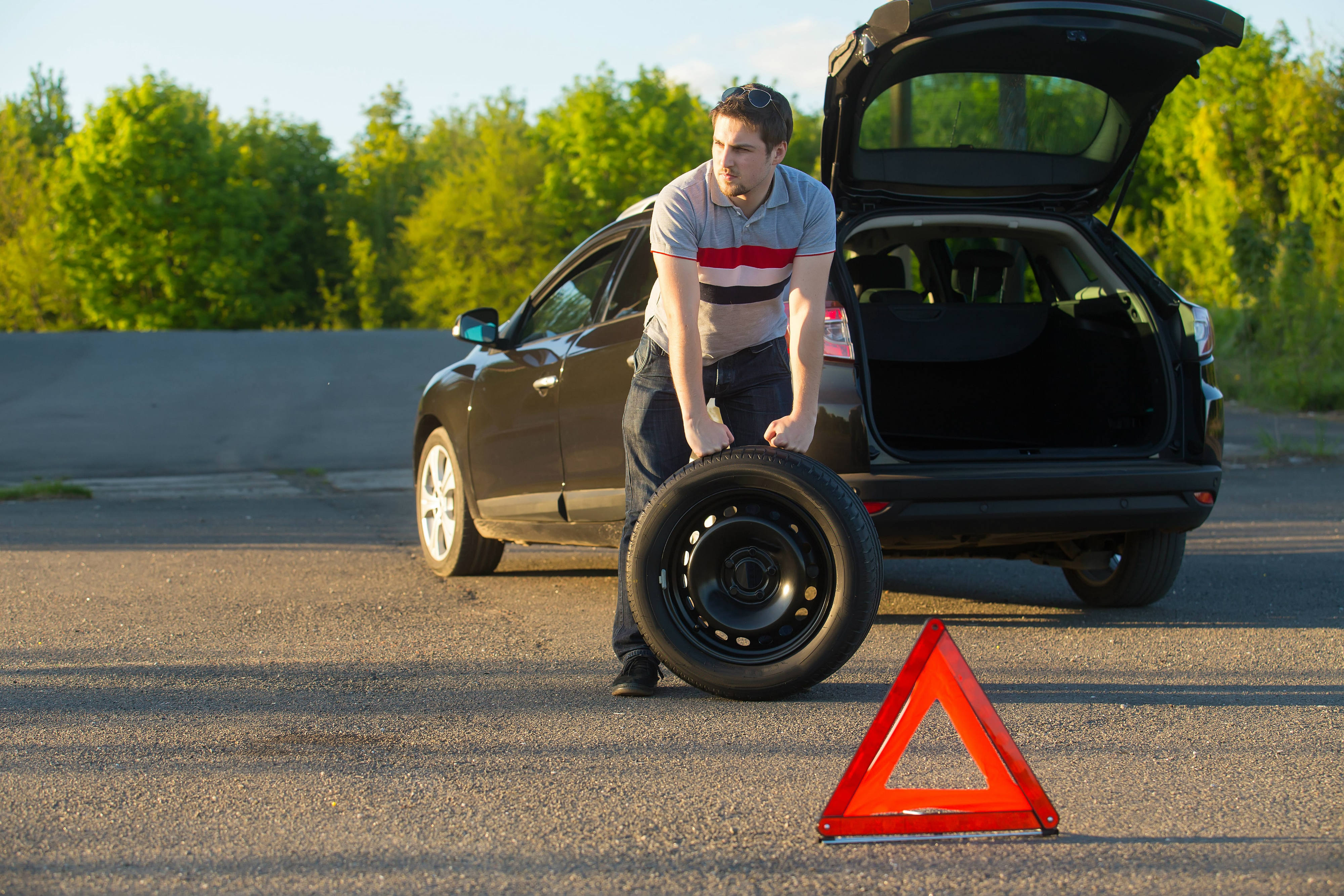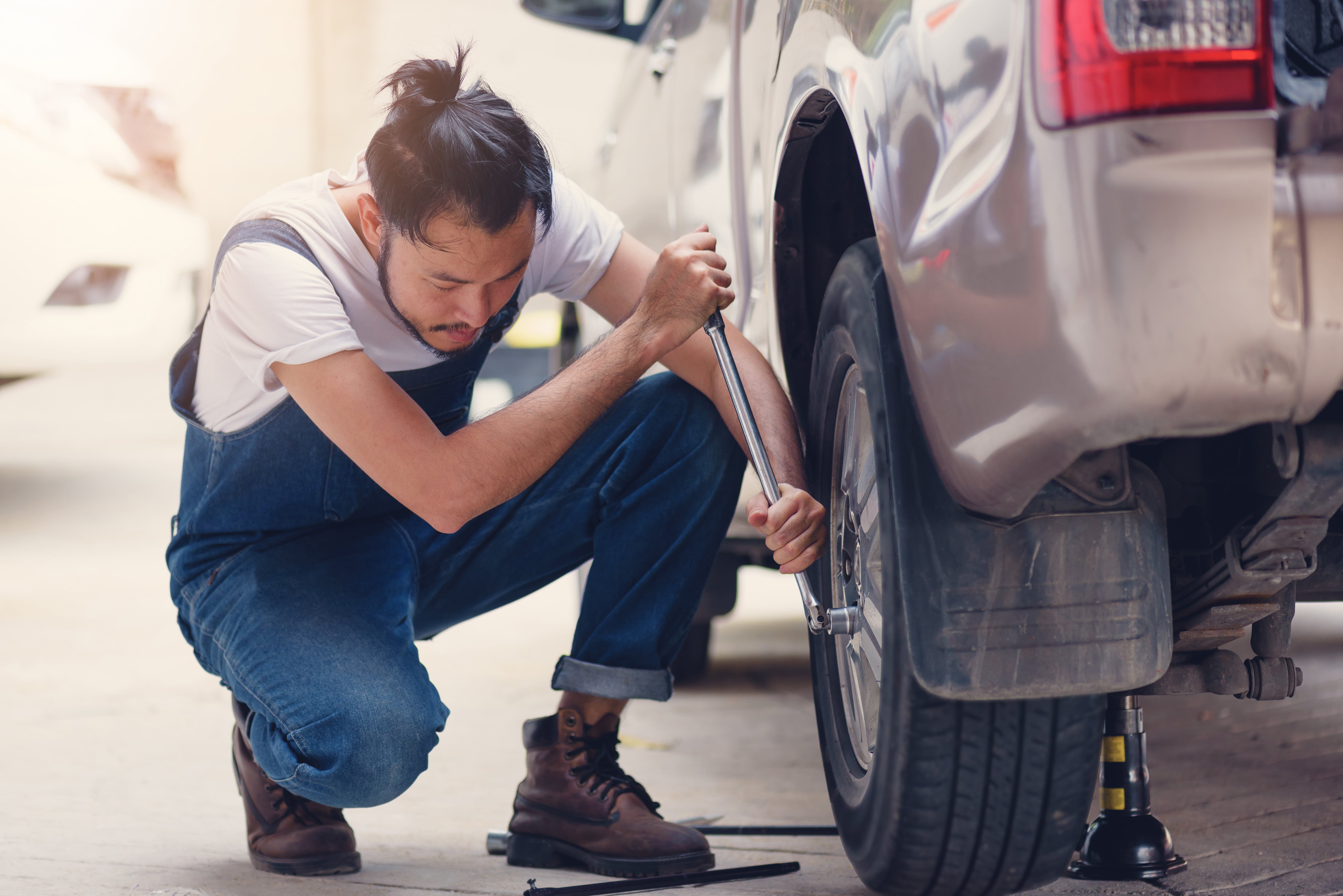So, if your car tyre puncture, there’s the bad news and the good news. The bad news is that flat tyres are a common roadside problem and might be encountered unexpectedly or whenever you have somewhere urgent to be. The good news is that every driver has had to confront a tyre puncture at some stage or another, and with a few tips about car maintenance and repair as well as basic knowledge of changing a flat tyre, you’ll quickly be able to get yourself out of a tricky situation and get back on the road in no time.
Here are some tips on what you can do before, during and after a flat tire, so you’re always prepared.

Before the car purchase
When buying a car
You may think it goes without saying, but always go to trusted dealers to buy your tyres and remember to never use them beyond the date of expiry. If you happen to be buying a second-hand car, if you notice excessive tread wear, cracked sidewalls, or any discoloration or bulging, check with your mechanic. A well-maintained set of tyres go a long way in contributing to your safety, fuel efficiency and driving comfort.
Invest in reliable roadside assistance
Sometimes, even with all the tools and knowledge of dealing with a car tyre puncture handy, it may prove to be difficult to loosen the bolts or hold the tyres in place. Have the contact information of reliable roadside assistance handy for times when you can’t get out of the situation on your own. Check with your car dealership, the insurance company, or other third-party groups about roadside assistance schemes or any other car repair service nearby that match your budget and needs. It’s always nice to know that help is only a phone call away.

When you get a flat tyre
What to do if the tyre goes flat while driving?
Continuing driving while you get a flat tyre might impose great risks to your safety and on others driving on the road. While you hear groaning or grinding sounds with your tire going flat, and you feel your slowing down or you losing control of the ride, you must instantly move to a safer side, switch on the emergency lights and take steps to or seek further help to rectify the damage.
What should I do if I notice my tyre is flat?
It is better to notice a flat tyre while your car is parked than feeling the repercussions of it while driving down the road. Inspect your tire for the damage done and put on the spare tire after you’ve identified the flat one.
Be prepared
Know where you keep your “fix-your-flat” kit and what each tool does. Should a situation arise when you are left with replacing a tyre in the middle of a highway, having all the tools and equipment necessary will ensure you won’t need to flag down a speeding car to borrow theirs. You can get to work straight away.
Be calm
If you discover you have a flat tyre in the middle of a highway or a busy traffic signal, stay calm. Ease off the accelerator, and gently apply the brakes until the car comes to a complete halt. If it’s possible and safe to do, turn on the blinkers while making your way to a spot that’s a level, hard surface, and free from passing traffic. Once there, set your hand brake.
Change the tyre yourself if required
It may be a moment you’ve been dreading or one that doesn’t faze you if you’re a car or mechanics junkie, but every driver would do well to have the basic skills of knowing how to change a flat tyre. Only make sure you’ve given it a few rounds of practice, so when it’s really time, you’re ready to roll up your sleeves and get to work.

Follow the rules of driving on a spare tyre
When driving on a spare tyre, follow the rules that go along with driving one, whether it is cruising at a different speed limit, or being aware of how differently the vehicle now handles braking. Again, spare tyres are not meant for commuting long distances, so make sure you get a new tyre or fix the puncture as soon as possible.
Ongoing maintenance
Take your car for regular car check-ups
Periodic car maintenance helps to reduce the risk of punctures. Remember to take your car for regular check-ups, even though it may be running optimally. It is important to inspect tyres for alignment, balance and regular wear and tear. Obvious ones should be fixed immediately with the help of a good mechanic. Don’t forget to check the air pressure in the spare tyre periodically too.
After all, a spare tyre with no air is as good as no tyre at all. Dubai’s Roads and Transport Authority recommends replacing tyres no later than five years.
Here’s a handy hint: To find out the date of manufacture of the tyre, simply look at the last four digits of the DOT code, which is found on the side of each of your tyres. While the first two digits indicate the week of manufacture, the last two digits refer to the year.

Beware of the heat during the summer months
High temperatures can become a serious concern, especially if tyres are not properly maintained. Experts recommend checking tyre pressure on all four tyres including the spare wheel when the tyres are cold, that is, when the car hasn’t been driven for over 3 kilometers or has been parked for around 2 hours, to get the most precise measurement.
Ensure you follow these safety measures so that you give yourself an easy, hassle-free experience while cruising on the highways of Dubai. Should you need any kind of assistance while on the road, know you can always contact Carcility here.







